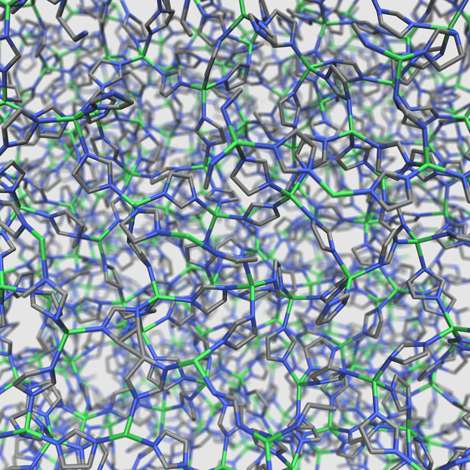Study reveals surprising new properties for hybrid organic-inorganic materials

Hybrid organic-inorganic materials, which were developed approximately twenty years ago – notably by Gérard Férey, laureate of the CNRS 2010 Gold Medal, and his team – are known firstly for their extreme porosity. This remarkable property offers a diverse range of applications in the fields of energy, health, and sustainable development. Researchers from the Institut de recherche de chimie Paris (CNRS/Chimie ParisTech) and Cambridge University have conducted an inventory of research to date, which has revealed surprising new properties for these materials. The more their crystalline structure has defects, the greater their performance. This research was published on December 20 in Nature Chemistry.
Hybrid organic-inorganic materials are highly porous crystalline structures, with an internal surface that can represent more than 6,000 m2 per gram. This enables them to immobilize a large number of molecules, hence their use as adsorbents in the capture of carbon dioxide for example. The variety of their structure and composition also makes them excellent catalysts for many chemical reactions. In fact, the complex supramolecular assembly of these materials is so fascinating that in recent years, chemists across the globe have been racing to synthesize as many as possible. While more than 15,000 structures have been created to date, we only know the detailed physical properties of a few dozen of them, and only about ten are currently available on the market.
Researchers from the CNRS and Cambridge University have established an inventory in order to become better acquainted with their properties. Their work has uncovered a surprising and counterintuitive phenomenon: defects, molecular disorder, and flexibility in the crystalline organization provide these materials with positive characteristics. Although hybrid organic-inorganic materials are often seen as rigid crystalline structures, the researchers emphasize that they possess high large-scale flexibility, which is often coupled with their defects. In other cases, these imperfections in the crystalline network increase their ability to catalyze or to capture carbon dioxide. This study should make it possible to find new applications for these materials based on their properties and our needs.
More information: Thomas D. Bennett et al. Interplay between defects, disorder and flexibility in metal-organic frameworks, Nature Chemistry (2016). DOI: 10.1038/nchem.2691
Journal information: Nature Chemistry
Provided by CNRS




















